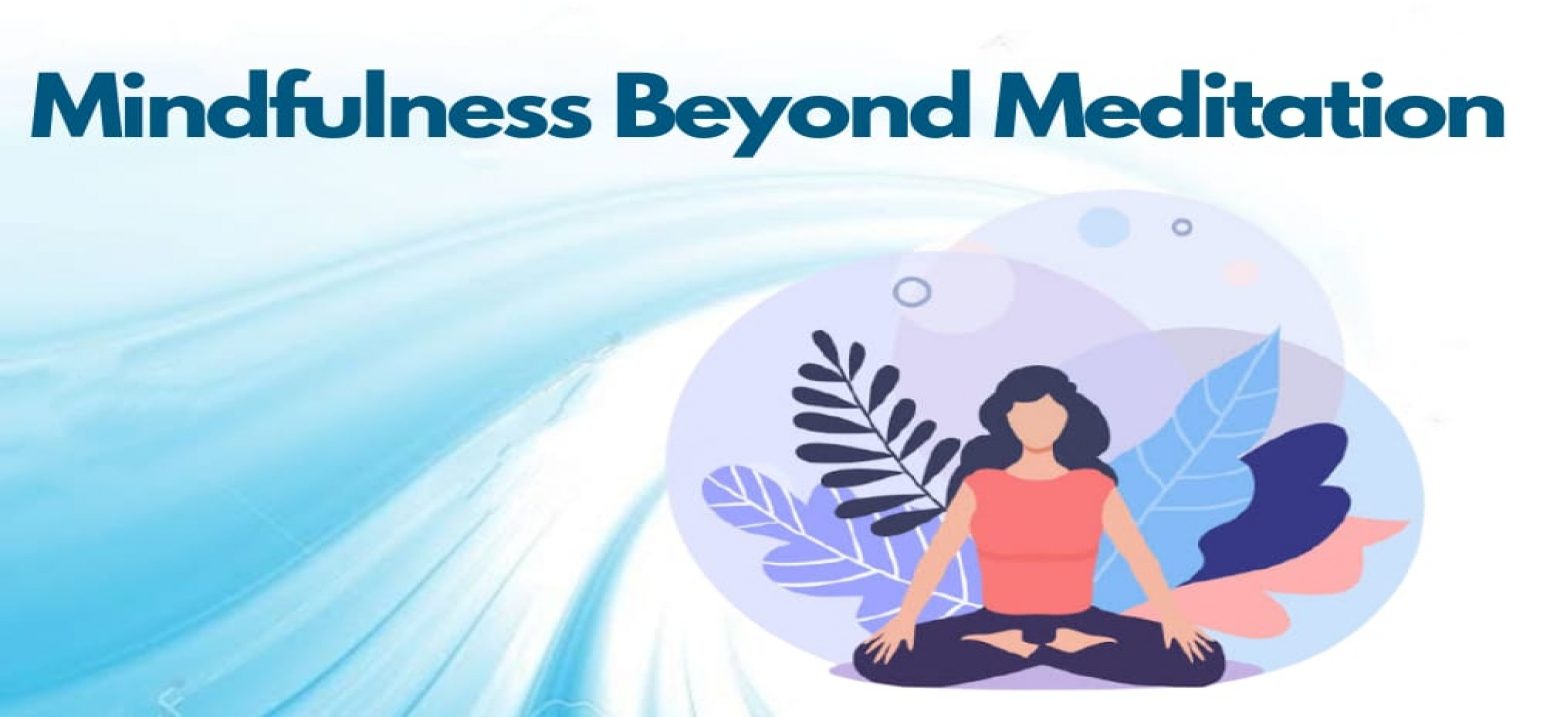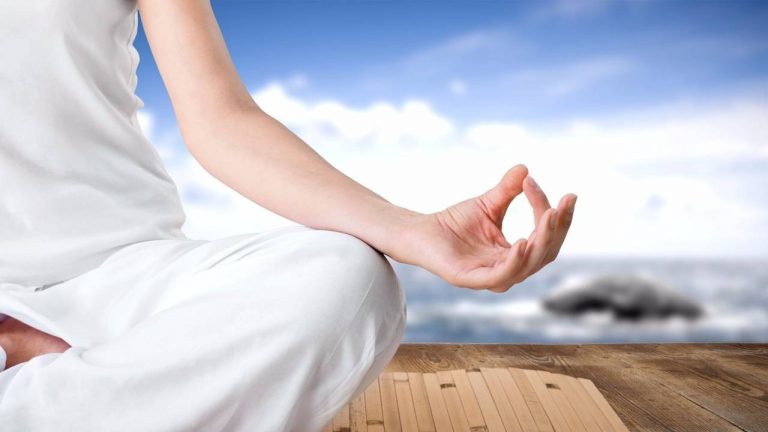Mindfulness Beyond Meditation
“Mindfulness isn’t difficult. We just need to remember to do it.”- Sharon Saltzberg
The fast-paced lives of the 21st century, especially in the metropolitan cities with the pollution, noise, people, and problems can drive anyone to the edge. After spending long hours working, studying or driving in traffic can drain energy you need for the rest of the day. Often people tell us, “live in the moment.” It’s easier said than done, isn’t it?
What if we told you it’s not as hard as you think it is either? Don’t believe us? Ok, we’ll take up the challenge. First, you should know the origins of mindfulness go back to Buddhist concepts of ‘Sati’ and ‘Smriti’ which imply, “to bare attention,” or, “to remember.” It began to gain acceptance as a practice in 1970 when its uses to battle stress and addiction were increasingly identified. To put it simply, Mindfulness just means to be aware without judgement.
‘Mindfulness’ and ‘Meditation’: The Difference
For those of us who are not familiar, it’s useful to know that ‘Mindfulness’ and ‘Meditation’ are not synonymous. Meditation is recommended as one of the prominent and effective techniques to practice mindfulness, but they are two different concepts. This is important to understand, to spare us confusion. It would be more accurate to see mindfulness as a technique or a part of meditation which may refer to larger practices of attaining a higher level of consciousness.
‘Mindfulness meditation’ is a specific practice within the umbrella of ‘meditation’ serving the end goal of achieving mindfulness. This form of meditation according to research promotes ‘metacognitive awareness’ and ‘emotion-regulation strategies’. Mindfulness meditation is easier to practice as it may refer to simpler things like being aware of what you are doing, or what you are eating just by paying attention.
Why Do We Need Mindfulness?
Whenever we talk about something related to psychology or mental health, this usually is our go-to question. That is because we are often not aware of what these practices can do for us. But, Mindfulness is one such practice that can elevate your life with its simple addition to your routine. It is neither time-consuming, nor is it harmful. All it takes is 15 minutes of your time that you may otherwise spend scrolling through social media. These are only a few of its benefits below:
- Improves wellbeing and mental health: Seems a bit vague? Mindfulness can help change your attitude towards daily life, allowing you to be completely present at a boardroom meeting, a lecture, or when you’re out with friends. It also helps reduce anxiety and keep depression in check.
- Improves physical health: Since it works on reducing stress and anxiety, it will consequently keep your heart and your blood pressure under control. Furthermore, it will improve your sleep.
- Boosts working memory: Mindfulness helps working memory, essential for your reasoning and decision-making.
- Helps focus: Since mindfulness makes you aware and brings you to the present, it helps you stay focused.
- Less emotional reactivity: The practice has been proven to help people handle emotionally upsetting situations better and improve cognitive flexibility during stressful situations.
These are just five benefits among others. If you don’t believe us, believe the research!
What Techniques Does Mindfulness Involve?
Mindfulness may involve a range of techniques:
- Mindfulness meditation: You only need to sit and focus on your breathing, with or without a mantra to repeat. As you get distracted bring the focus back on to your breathing. Even 10 minutes of meditation can be particularly beneficial.
- Body sensations or sensory observation: Observe your body, and all the senses of sight, touch, sound, smell and taste. Basically, when you are eating something, focus on the food, enjoy it. It could simply mean listening intently to a song or even just the smell of your favourite food or flower.
- Emotions: Observe and let your emotions flow without judgement, letting them go. As you are observing your thoughts and emotions resist the urge to get carried away.
- Urge Surfing: This means to learn to handle your cravings, using the knowledge and awareness to combat cravings as they come.
None of these processes are rocket science.
Practicing Mindfulness:
Yoga and Tai Chi have been found to be particularly effective in the practice of mindfulness, especially in the practice of mindfulness meditation as these activities help in heightening awareness and bringing control over one’s thought processes.
Just like majority of activities, in mindfulness too, practice makes perfect. Here are some simple ways you, on your own with little investment of time and energy can practice mindfulness:
- Start short: You don’t have to dive straight into fifteen minutes of mindfulness. Take it slow and begin with a few minutes, gradually extending it as you get more comfortable with practice.
- Learn to meditate: Try starting to understand what meditation means, how do you do it, and then find a technique that suits you. This will put you on the right part towards mindfulness.
- Pick a mantra or a short positive statement: Having a positive affirmation to start and end your day with, automatically takes a lot of weight off your mind. You could also have physical cues like an object to remind you.
- Let your thoughts free: The idea of mindfulness isn’t to discipline you, as a child you’d have been told to pay attention. Mindfulness lets you be completely at peace with yourself and this means you need to accept your mind as it is, in its natural state.
- Practice mindfulness in between activities: You don’t need to make extra room for mindfulness in your schedule. The idea isn’t to bring more stress to your life. The main advantage of mindfulness is that you can practice it anytime and anywhere— while you wait at a bus stop, waiting for a call, having your food, maybe even when you lie down to go to sleep or wake up. It becomes a part of your routine, when you don’t see it as a task and see it as just another habit.
[/vc_column_text][vc_column_text]Besides these, you can always add a little more structure, if that suits you with more routine interventions such as, Group therapy, an approach used to deepen the mindfulness meditation process, and may also reduce social anxiety. A variety of activities are conducted during the therapy such as mindful seeing which would mean looking at a view and observing while trying not to judge or categorise. You could also take part in individual mindfulness activities, with an external aid, if you find that practicing mindfulness on your own is challenging or intimidating.
There is no one size fits all in wellbeing and health. All of us have unique requirements based on our lives and experiences. Therefore, mindfulness is a practice that takes the shape you want it to. We at MBS understand your unique requirements and work with you to find the best holistic solution for your wellbeing offering a range of services you can choose from.
- https://www.apa.org/monitor/2012/07-08/ce-corner
- https://en.wikipedia.org/wiki/Mindfulness
- https://positivepsychology.com/mindfulness-exercises-techniques-activities/
- https://www.helpguide.org/harvard/benefits-of-mindfulness.htm
- https://www.huffpost.com/entry/10-easy-ways-you-can-practice-mindfulness_b_8069422?guccounter=1&guce_referrer=aHR0cHM6Ly93d3cuZ29vZ2xlLmNvbS8&guce_referrer_sig=AQAAADaf5WOBtHd5iAL5ZNAzEYXjX7S6Wx0eeu84DZ1pmWUu0YPeNI_KtYB-84KelvZ3KW2K-moGVuBDorutgc99NLiO0rJWB0uXqgofdoYbpKHo-Fi1Zb_kPB9-y_76FlOKFtrt9sn9j3n6L18RjVH4URsa3GZWdOTYZ3g0CIYIXP4h
- https://psychcentral.com/blog/7-easy-ways-to-be-mindful-every-day/


